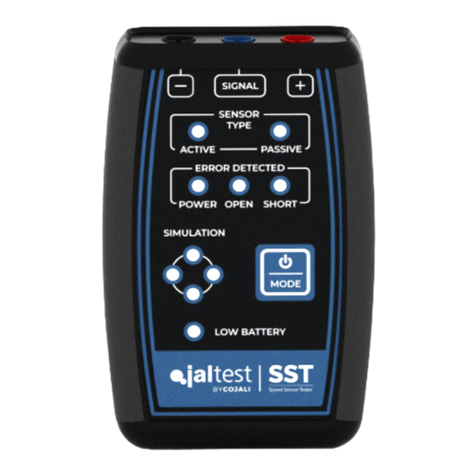
English 8
2.1 CHECK OF CONTINUOUS AND END-OF-PAD/2-
WIRE SENSORS
2.2 CHECK OF THE WEAR OF BRAKE PADS AND
DISCS
1. Disassemble the vehicle wheel if needed
2. Disconnect the connector of the brake caliper sensor
3. Loosen the brake pads with the help of the adapter until they can be
disassembled
Important: The pushers must be at the same height, with a difference below 0.25mm.
Otherwise, the brake caliper must be replaced.
4. Connect the corresponding connector from Jaltest WST to the sensor connector
5. Turn the sensor type selector to the corresponding position. See table 2
6. Adjust the distance between the pusher and the brake caliper according to table
of the selected sensor* and compare the values shown on Jaltest WST with those of
the table (maximum and minimum values)
*Table 3 for manufacturer DAF, IVECO, MB, SCANIA, (+)
Table 4 for MAN, MERITOR
Table 5 for end-of-pad/2-wire sensors
Important: Important: The adjustment spindles should not be totally unthreaded,
since the synchronisation between the pushers would be lost. Never exceed the ab-
solute minimum dimension “L” shown on table 1.
Note:
• If Jaltest WST indicates 0V during the test, check the position of the selector and
the connection.
• If the values are correct and within a tolerance of ± 0.25V, the sensor operates
correctly. Otherwise, the sensor must be replaced.
To check the wear, the brake calipers can assemble 2 types of sensors: end-of-pad/2-
wire sensors and continuous sensors. Depending on the type of sensor, the check
must be performed in one way or another. In any case, the following steps must be
carried out:
1. Disassemble the vehicle wheel if needed
2. Disconnect the connector of the brake caliper sensor
3. Connect the corresponding connector from Jaltest WST to the sensor connector
2 Procedure




























